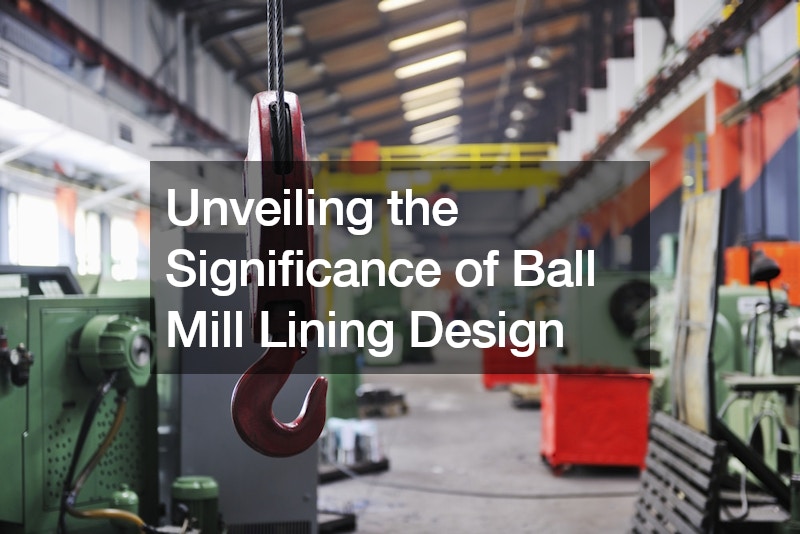In the realm of industrial processes, ball mills play a pivotal role in various sectors, such as cement, mining, and materials processing. These cylindrical devices are designed to grind or blend materials for further refinement, making them indispensable in countless manufacturing applications. However, beyond the mechanical prowess of the ball mill itself, an often underestimated aspect significantly influences its efficiency and longevity – the design of the ball mill lining.
The Core Functionality of Ball Mills:
Ball mills operate by rotating a cylinder filled with grinding media, such as metal balls or other materials, causing the material to be ground or blended. This process is vital in achieving the desired particle size and characteristics of the final product.
While factors like rotation speed and filling ratio impact performance, the role of the ball mill lining in optimizing operations should not be overlooked.
Guarding Against Wear and Tear:
Ball mills endure extreme conditions during operation, including the abrasive impact of grinding media and the harshness of the processed materials. The lining of the ball mill serves as a protective barrier between the rotating cylinder and the abrasive elements within, safeguarding the structural integrity of the mill itself. It acts as a sacrificial layer, absorbing much of the wear and tear to enhance the mill’s durability.
Optimizing Efficiency through Lining Design:
The efficiency of a ball mill is not solely determined by its mechanical components; the lining design plays a crucial role in the overall performance. An effective lining design can minimize energy consumption, reduce downtime for maintenance, and enhance the milling process’s overall productivity. It is a delicate balance between achieving optimal wear resistance and facilitating the efficient movement of the grinding charge.
Factors Influencing Lining Design:
Material Characteristics: The choice of lining material depends on the types of materials processed in the mill. Different materials exhibit varying levels of abrasiveness, impacting the selection of an appropriate lining material.
Liner Shape and Configuration: The design of the liner influences the trajectory and impact of the grinding media. Cleverly designed liners can improve grinding efficiency by promoting better cascading and cataracting of the grinding charge.
Installation Precision: The meticulous installation of the lining is paramount. Even minor deviations can affect the performance of the ball mill. Precision in installation ensures optimal alignment and functioning of the mill.
Prolonging Equipment Life and Reducing Costs:
Investing in a well thought out ball mill lining design pays dividends in the long run. By minimizing wear and optimizing the grinding process, industries can extend the life of their equipment, reduce maintenance costs, and enhance the overall efficiency of their operations. It becomes a strategic element in achieving operational excellence and gaining a competitive edge.
Consistent Innovation in Lining Technology:
As industries evolve and materials processing requirements become more diverse, the field of ball mill lining design continues to witness innovative strides. Manufacturers are investing in research and development to create advanced lining materials that offer superior wear resistance, longer lifespan, and enhanced operational efficiency. The continuous evolution of lining technology allows industries to adapt to changing demands, ensuring that ball mills remain versatile and effective across a spectrum of applications.
Environmental Impact and Sustainability:
In recent years, there has been a growing emphasis on sustainable and environmentally friendly industrial practices. Ball mill lining design is not exempt from this trend. Forward-thinking manufacturers are exploring eco-friendly lining materials and designs that reduce the environmental impact of the milling process. By incorporating sustainable practices into lining design, industries can align their operations with global efforts to minimize resource consumption and waste, creating a more responsible and sustainable approach to materials processing. As the focus on corporate social responsibility intensifies, the choice of lining design becomes a strategic decision that aligns with broader sustainability goals.
In essence, the world of ball mill lining design matter. It extends beyond the realms of performance and efficiency. It intertwines with the broader narrative of technological advancement, sustainability, and responsible manufacturing practices. Manufacturers who recognize the multifaceted importance of ball mill lining design are better poised to navigate the complexities of modern industry, where efficiency, longevity, and environmental considerations converge.
Conclusion:
Understanding why ball mill lining design matters is crucial in unraveling the intricate workings of these complex machinery systems. More than just a protective layer, the lining plays a pivotal role in enhancing the efficiency, extending the lifespan, and influencing the overall performance of the ball mill. For manufacturers and industries striving for optimal results in their milling processes, acknowledging the central importance of ball mill lining design is imperative. Strategic investments in customized solutions tailored to specific applications become the linchpin for unleashing the complete capabilities of this indispensable industrial workhorse. The synergy between precision engineering and groundbreaking lining design emerges as the cornerstone, facilitating a seamless integration that maximizes the potential of ball mills.
.


